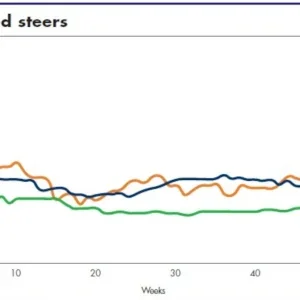‘It’s plain to see that we have an overcapacity to process cattle based on the number of cattle available for processing, and I don’t think that’s going to change in the future’, Bond said. ‘What I have come to believe, quite frankly, is that the herd and the availability of cattle has probably peaked not only for this cycle but maybe even forever.’
Sustained droughts in the Great Plains, rising grain costs, increased development of rural lands and closed exports all have played a part in reducing the nation’s cattle herd, experts say.
According to numbers released on February 1 by USDA’s National Agricultural Statistics Service, the US herd has declined by 300,000 head since January 1, 2007. Meanwhile, beef calves that had calved by January 1 were down 338,000 from 2007 and heifers of 500 lb or more held for beef calf replacement were down by almost 208,000 head. Indications are that the herd will continue to shrink.
Though the current climate is dire – Tyson’s Emporia slaughterhouse is the fourth US beef plant to be shuttered in the last ten years – Bond said Tyson have no plans to bow out of the beef game, as some analysts have speculated.






